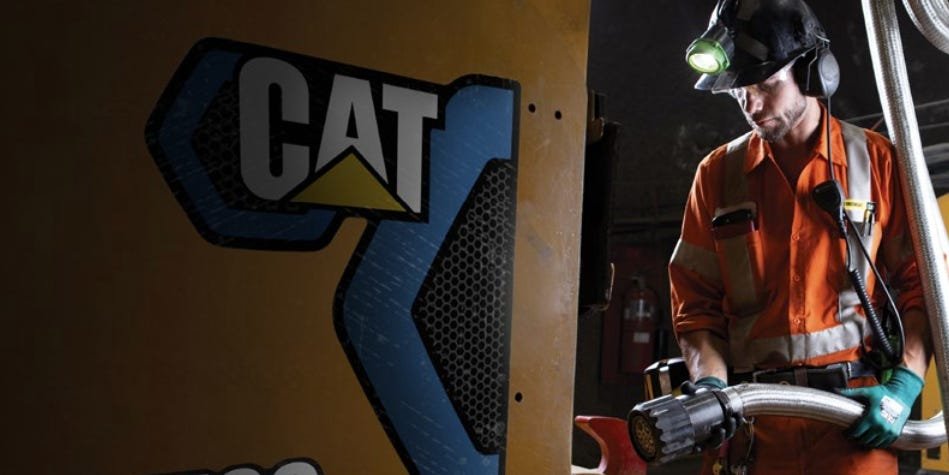Heavy industry meets battery recycling as Redwood Materials strikes a deal with Caterpillar to recycle the lithium-ion batteries powering CAT’s electric mining equipment.
Caterpillar’s R1700 XE is a zero-emission underground loader that’s powered by electricity rather than diesel fuel. Its 213-kWh battery pack, roughly equivalent to 3 to 4 Tesla battery packs, stores enough energy to run the loader in demanding conditions while eliminating on-site exhaust emissions. For miners, this means improved air quality underground and reduced ventilation costs.
What makes the partnership with Redwood noteworthy is the cyclical nature of this new value chain: the very metals Caterpillar’s equipment extracts, such as lithium, are now being recovered from the R1700 XE’s batteries and fed back into the supply chain.
Caterpillar
When these batteries eventually run out, Redwood ensures that high-value materials, including lithium, cobalt, and nickel, are extracted, refined, and ready for reuse. This reduces reliance on freshly mined resources and keeps valuable metals in circulation.
Dustin Krause, VP of sales and business development, described the somewhat ironic nature of mining with electric equipment and the fact that Redwood can recycle some of that equipment and the material it pulls from the ground, infinitely.
“Redwood usually does grave to cradle. We bring end-of-life materials from batteries and bring them back to life again,” Krause told Business Insider. “With CAT, this is both grave to cradle, and cradle to grave. We’re helping this company get these materials out of the ground, too.”
This highlights how practical, realistic approaches are needed to support the transition from carbon-emitting fossil fuels to cleaner electric solutions. According to Redwood, global demand for batteries is expected to soar by more than 1,000% in the coming decade.
It’s not enough just to recycle this stuff — we still need to dig it out of the ground. Redwood and CAT aim to make that mining process as sustainable and financially viable as possible.
The deal mirrors Redwood’s existing arrangements with automakers and other companies that deal with a lot of batteries reaching the end of their useful lives. Redwood often pays to access this supply, betting it can make more money by turning this unwanted, hazardous scrap into the new black gold.
The company says it recycles the equivalent of 250,000 electric vehicles’ worth of batteries annually.
While neither company disclosed the exact commercial terms, Redwood confirmed that the arrangement ensures recovered materials return value to Caterpillar — whether as direct value recovery or reduced raw material costs — while giving Redwood a new source of batteries to funnel into its giant recycling operation.
This means that while some of the recovered material could eventually find its way back into CAT’s equipment, it will also serve other battery manufacturing needs in the broader market.
Caterpillar
Electrifying underground equipment offers environmental and economic advantages. Diesel-powered machinery requires complex and costly ventilation systems to remove exhaust from underground tunnels. Ventilation is needed; otherwise, workers would inhale nasty fumes underground.
Electric loaders, such as the R1700 XE, eliminate that need, reduce carbon emissions, and can lower operating costs over time.
By combining Redwood’s expertise in large-format battery recycling with Caterpillar’s mining innovation, this partnership signals a future where the materials that power heavy industry are continuously recovered, reused, and reintegrated — closing the loop on mining’s electrification journey.
Sign up for BI’s Tech Memo newsletter here. Reach out to me via email at abarr@businessinsider.com.


